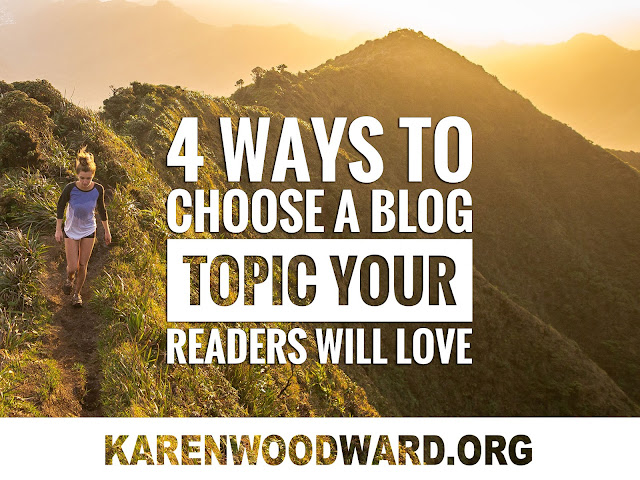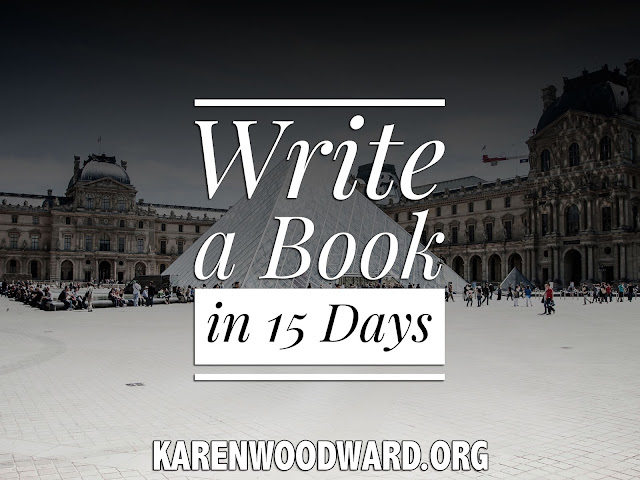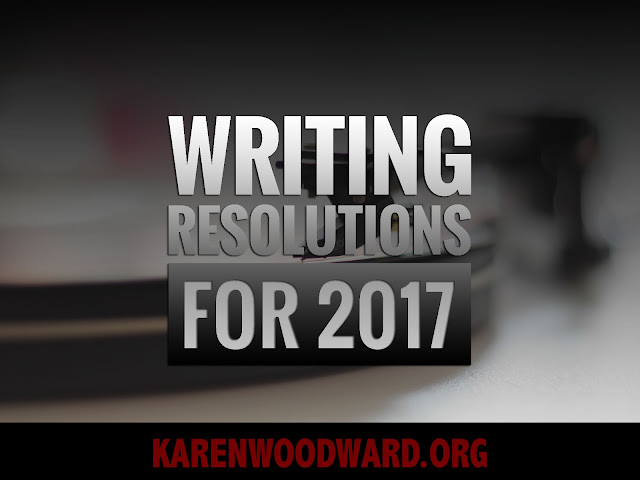This is the third and final post in a series on how to write a book in 15 days. In the first and second posts I talked about picking a topic for your book, creating an outline and the importance of finding the right subcategory for your book. Here are the links:
1.
Write a Book in 15 Days
2.
How to Pick Categories for Your Amazon Book
Now that we’ve picked a topic and created an outline it’s time to decide on a title.
Craft the title.
You might be wondering why I’m advising you to choose a title now rather than after you’ve finished writing. It’s because I find knowing my title helps keep me on track because it contains the promise of my book.
For example, “20 Idyllic Scuba Diving Locations That Won’t Bankrupt You” or “20 Christmas Cookies Your Mother-In-Law Will Love.”
These titles make a promise to the reader. For example, “20 Idyllic Scuba Diving Locations That Won’t Bankrupt You” promises that if you go to one of these spots to scuba dive, you’ll have a wonderful time but spend less than if you went anywhere else.
Do Market Research
The single most important thing you can do to help sell your book is to look at bestselling books in the categories you’ve chosen.
I won’t go into market research in any depth here, the topic is too big, but here’s the gist:
a. Find your target categories.
I went through an
example of this on Friday. Here are the categories I came up with:
Kindle Store > Kindle eBooks > Business & Money > Entrepreneurship & Small Business > Small Business
Kindle Store > Kindle eBooks > Business & Money > Entrepreneurship & Small Business > Home-Based
Books > Business & Money > Small Business & Entrepreneurship > Home Based
b. Use the top 5 books in each category as examples.
Buy and read the top five books in each category. Look at how these books are structured, what topics are covered, what tone the authors adopt (comedic, impassioned, detached, and so on).
The idea is to get a feel for what books do well in your chosen categories as well as
why they do well. (If you can, buy and read one or two books in each of these categories that aren’t doing well. Ask yourself, Why is this book not doing well? What is the difference between the two)
c. Look at the covers.
As far as I can tell the single biggest determiner of a book’s success is its cover. It may sound odd to put it like this, but the actual content of the book doesn’t sell the book, it sells the next book.
Look at the covers of the bestselling books in each category and break them down into their component elements. Does the cover contain text only, or is there an image? Is the image a cartoon or a photograph? Is there a focal image? That is, does one image clearly dominate the cover? If the cover primarily contains text, is the text bold or italic? Which font was used? (If you don’t know which font it is, try sites like
identifont or
fontsquirrel.) And so on.
For example, if you look at the "Thrillers & Suspense" category most of the top ten books prominently feature photographs. On the other hand, many self-help books contain only text.
I want to stress that the idea is
not to copy the cover. We just want to understand what characteristics are common to the covers of the books that sell the best in your categories. Of course you want a unique and distinctive cover, but the idea is for it to be easily recognizable as the cover of a certain
kind of book.
Write the book.
If you write 2,000 words a day for 15 days you’ll have 30,000 words. If writing 2,000 words a day seems daunting, keep a couple of things in mind.
First, you don’t have to write 2,000 words a day! If the most you’ve ever written is 200 words a day, 2,000 might seem impossible. In that case shoot for 200 a day and after you feel comfortable, try increasing it to 300, and so on. Even if you only write 500 words a day it will only take two months to write a book!
Or perhaps you can write a considerable number of words in a day but can, say, only write one day a week. In that case, one would need to write 3,500 words in one sitting once a week. At 1,000 words per hour, that would only take 3.5 hours!
Second, write a Zero Draft. A Zero Draft is what I like to call a vomit draft. The idea of a Zero Draft is to get your unfiltered thoughts down on paper as fast as you can. Don’t worry about spelling or grammar. Research is a must, but put off as much of this as you can until the next draft. For example, if you’re not sure about something like the spelling of a name or a date, just put in a placeholder and, if it survives into the next draft, do the research.
Why? If you’re anything like me then as much as 25% of the words you write for the Zero Draft won’t find their way into the next draft. If you pause to do detailed research on this 25% then that is time wasted.
Write an introduction.
After you’ve finished writing the book, write the introduction. Since the introduction is all about what you’ve written, even if you do write it first, chances are you’ll have to completely rewrite it. Why? Because the only way to know exactly what you’re going to write is to write it!
In the first part of the introduction tell your readers why yours is a book they need to read. People have ‘pain points,’ areas that prevent them from fulfilling their goals, from accomplishing what they want. What are your readers’ pain points? Do they want to plan the perfect vacation but are feeling overwhelmed by all the information, all the possibilities? Or do they want to learn ways to unleash their inner vagabond while not completely blowing their budget?
Tell readers how your book is going to help eliminate these pain points.
For example, let’s think about someone who shops on Amazon and who is interested in German dessert recipes. Perhaps she’s not German herself, but her significant other
is and that means going home with him for the holidays. Which means that you have to cook something to present as a gift. The question: what to make? Well, cookies made with German culinary traditions could help remove that particular pain point!
Hire the best editor you can afford.
It’s 15 days later and you’ve written 30,000 words. You have an introduction and you have 10 or so chapters.
What you need to do now is send your book-baby off to the best line editor you can afford.
Before you do this, though, put your manuscript in a drawer and leave it for a week. If you can’t stand to leave it for a week, then put it in a drawer for a couple of days.
When it’s time for your manuscript to come out of the drawer, read the manuscript through. You can also have your computer read the file to you—this functionality is build into both the Mac and PC. Try to make the manuscript free of grammatical and spelling errors.
Then, and only then, send it off to a line editor or proofreader—someone who will make sure that you’re using the appropriate words in the appropriate places, someone who will double-check your spelling and grammar, and so on.
I kid you not, every time I send a manuscript off to an editor I’m sure I’ve caught everything and every time they have pointed out mistakes I made that would have been embarrassing.
Should you use a pen name?
There are many reasons to use a pen name.
Discovery. If you write in several genres, or if some of your books are fiction and others are non-fiction, then using a different pen name for each genre can help keep readers from being confused. For instance, if a person likes reading sci-fi, they know what name to search for.
Privacy. Also, using a pen name gives you privacy. Readers have been known to use an author’s name to track them down in real life. Even though most of these people are harmless it can be disconcerting for an author to open their door to a stranger who seems to know all about them. Even if you’re not worried about being stalked, if you write in sensitive genres such as erotica, you might want to keep that information from your family or your boss.
But there are also reasons to use your real name. If you use a different pen name for each genre you write it makes it more difficult for readers to discover all your books (sometimes folks want to read, or at least look at, whatever you’ve written). Granted, this deficit can be largely overcome by listing all your books on your author website, but these days some authors are electing not to have one. Instead, they share everything through their various social media accounts.
If you would like to read further about this, I’ve written an article on the subject:
Should You Use A Pen Name?
Create an eye-catching cover
You have a manuscript but it’s off with the editor so you’re left twiddling your thumbs. Now’s the time to work on your book’s cover. You have the title, you’ve decided what name you’re going to publish under, you know what you want your cover to look like, so what are you waiting for?
Note: Look on pinterest.com. Google the subcategories you’re interested in and see what sort of images folks have pinned.
Should you create the book cover yourself or have an artist create one for you?
If money's no object, definitely get an artist to do one for you. If you can’t spend a huge amount of money but can manage $200 or so, think about using
99designs.com.
If money is tight and this is your first book and you’re just testing the water, then I would suggest you try to create the cover yourself and see how it goes.
GIMP (GNU Image Manipulation Program) is a free image processing program that’s quite powerful.
Here’s a link to an article I wrote about where to find free, public domain images:
Bloggers: 10 Sites With Public Domain, High Resolution, Images.
Every post I pick a book or audiobook I love and recommend it. This serves two purposes. I want to share what I’ve loved with you, and, if you click the link and buy anything over at Amazon within the next 24 hours, Amazon puts a few cents in my tip jar at no cost to you. So, if you click the link, thank you! If not, that’s okay too. I’m thrilled and honored you’ve visited my blog and read my post.
Today I am wholeheartedly recommending a book by one of my favorite writers,
Chuck Wendig: 500 Ways To Be A Better Writer. Chuck Wendig’s blog,
Terribleminds.com, is one of my favorite writing blogs but be warned! It is NSFW due to his creative use of the English language.
That’s it! The next step is formatting your manuscript and uploading it to Amazon. If anyone wants me to continue this series by talking about how to do that please let me know! If enough folks would be interested in me continuing this series, I will!
UPDATE: For your convenience, here are links to the other articles in this series:
Part 1 of 1:
How to Write a Book in 15 Days
Part 2 of 3:
How to Pick Categories for Your Amazon Book
Part 3 of 3: How to Choose a Title, Create the Artwork and Write the Darn Book!











